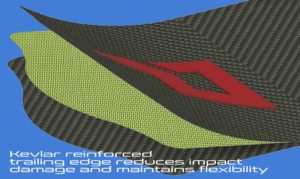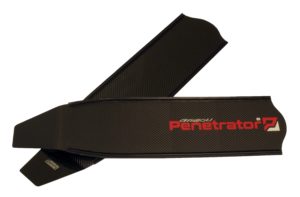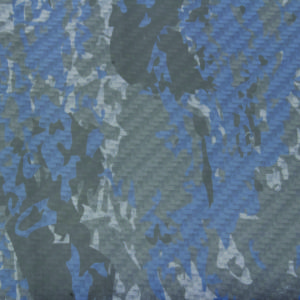
With the growth of the sport and the advent of new technology, the variety of high tech free diving and spearfishing fins has grown exponentially over the last five years. When it comes time to purchase a new set of blades, it can be a tough decision with the many different choices available on the market. There are various elements to consider when deciding which blades are best for you.
Performance, durability, and price are the three most important things to consider when making your purchase. In this review, we will be talking about the different features of both the carbon and composite blades offered by the Australian fin company, Penetrator.
Penetrator offers their blades in three different lengths: 72cm, 64.5cm, and 62cm. Typically, the longer blades in a medium stiffness work best for heavier divers with strong legs, and the opposite goes for divers with a smaller stature. One of the best things about the Penetrator blades is that they have a nice balance between durability and performance.


Penetrator blades are manufactured using a proprietary Capillary Closed Molding System (CCMS), which produces a fin with smoother flex curve. This system is a culmination of twenty-five years’ composite manufacturing experience applied to fin blade development over the past eight years by Penetrator Fins founder, Larry Gray. The carbon fiber models receive a protective layer of Kevlar 49 multiaxial reinforcement in the tip of the blade to prevent chips and cracks, which is a system unique to Penetrator blades. Kevlar is an extremely resilient and flexible material providing added impact resistance while allowing full flexibility of the blade tip. For the diver looking for maximum performance without sacrificing durability, the carbon blades are perfect.


The other option offered is the composite model, and these are manufactured from glass fiber and epoxy resin. The advantage of the composite blades is increased durability while maintaining a progressive flex property along the entire length of the blade, which is ideal for the diver who is hard on his gear. Penetrator offers the fin models with a variety of different graphics that are added using hard wearing epoxy inks during manufacture. Each graphic is digitally printed on to lightweight media and incorporated during the molding process using IML, creating a high-resolution image which will not wear or rub off.
Check out the selection offered here at The Waterman’s Guide, as well as the different foot pocket options.
720 blades:
Working blade length: 72cm
Insert length: 14cm
Blade width: 19cm
Angle to foot pocket: 25 degrees
645 blades:
Working blade length: 64.5cm
Insert length: 14cm
Blade width: 19cm
Angle to foot pocket: 25 degrees
620 blades:
Working blade length: 62cm
Insert length: 14cm
Blade width: 19cm
Angle to foot pocket: 25 degrees
Blade weight without foot pockets:
Carbon Naked 720 medium: 240 grams
Carbon Naked 720 soft: 215 grams
Composite 720 medium: 395 grams
Composite 720 soft: 345 grams
Carbon Naked 645 soft: 200 grams
Carbon Naked 620 soft: 185 grams
Composite 620 soft: 280 grams


